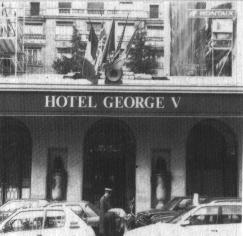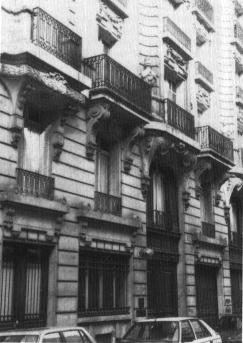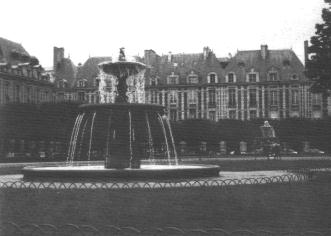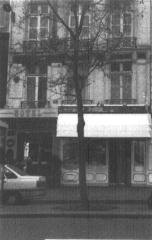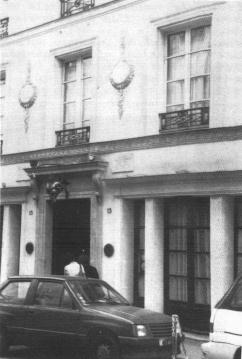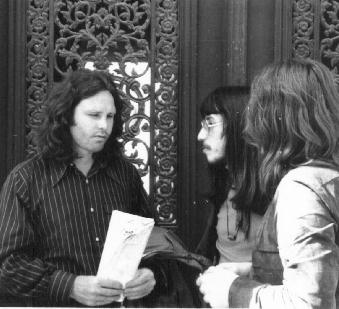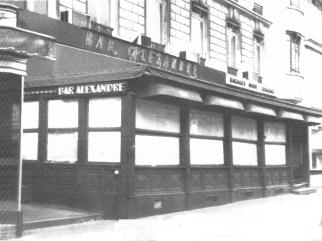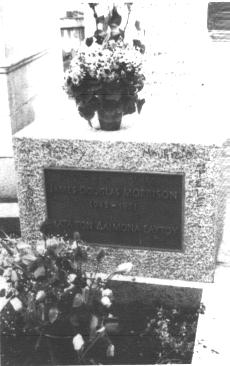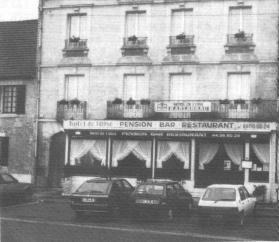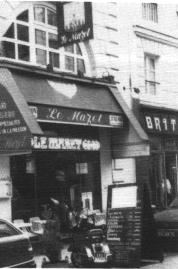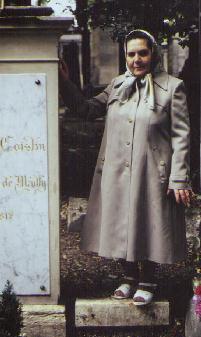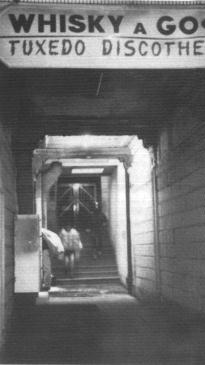JOIN JIM MORRISON FANCLUB
sâmbătă, 21 mai 2011
luni, 16 mai 2011
Jim Morrison's Quiet Days In Paris
| Jim Morrison's Quiet Days In Paris © by Rainer Moddemann For writing this article. which is based on the chapter "Stille Tage in Paris" from my book (Doors, Heel Verlag, Königswinter, Germany) I went back to the following sources: The books "No One Here Gets Out Alive " by Jerry Hopkins and Danny Sugerman, Jerry Hopkins' manuscript of "No One Here Gets Out Alive", "The End" by Bob Seymore, "Jim Morrison au dela des Doors" by Hervé Muller; the unpublished biography of Max Fink, Judson Klinger's unpublished report "As the Doors turn"; my interviews with Ray Manzarek, John Densmore and Robby Krieger; also my interviews with Frank Lisciandro, Kathy Lisciandro, Gilles Yepremian, Philippe, Patricia Kennealy-Morrison and Hervé Muller; countless radio shows, TV shows and printed interviews, especially King Magazine and Rolling Stone, other interviews with Madame Colinette and Agnes Varda. The translation was done by Barbarella Buchner, stylistic revision by Paul Carter. Special thanks also to Patricia Devaux, Rosella Madonna, Jeannie Cromie, Andreas Kanonenberg, Dan Salomon and Michelle Campbell for documents and information. The 'official' biography portrays Jim Morrison's time in Paris as being very romantic, if not a little disconnected from the world. Small wonder, as very little of his stay in the 'City of Poets and Thinkers' is as yet known to the public. This chapter, based on thorough research, will deal with Jim Morrison's "Quiet Days in Paris", as well as his death and Pamela Courson's death, all in detail.Ray Manzarek was disgruntled, but he didn't show it "Go on, Jim. Stay in Paris as long as you want. We'll go on working on the mixing of L.A. Woman", he had said to Morrison, when the latter had broken the news about his plans to leave Los Angeles, right in the middle of the final mixing of the new Doors album. This was at the beginning of February 1971. The Doors were in the studio, together with Bruce Botnick, sound technician from Elektra Records, mixing the individual tracks on the 8-track machine for the next album. Jim, who since the Soft Parade album had not much cared for mixing anyway, would rather hang out in his favorite bar, or go fishing with his drinking buddy Babe Hill. He was bored with life in Los Angeles though, and the memory of his first visit to Paris in 1970 had possibly given rise to his emphasizing, weeks before leaving, that he needed a few months rest in order to write new poems and he thought Paris might well be the perfect place. He mentioned that he wanted to buy an old church in the south of France, do it up and live in it, his own permanent island of peace. Pamela was enthusiastic about the idea. Jim had told her much about Paris, and she was aching to live in this enchanted, far-away, romantic city, and this was a good chance of course to get Jim away from The Doors and have him all to herself. "The man is a poet", she insisted, "he shouldn't be wasting his time with a rock band!" The Doors knew Pamela's views of course, and were naturally not of the same opinion. They didn't appreciate Pamela's presence at the Doors office very much, either. Jim's friends confirmed to him that Paris was the right place to go to get away from Los Angeles, and by extension to get away from The Doors. Alain Ronay had gone into raptures about the city time and again, and his relationship with the film-maker Agnes Varda, who also lived in Paris, reminded Jim of the long conversations they had had on the film medium, one of his favorite topics. Back in 1970, together with Agnes, Jim took the train to Chateau Chambord, to watch the shooting of Jacques Demy's film Peau D'Ane. None of the film crew there recognized him. Agnes still has a 3-minute film clip showing Jim sitting on the lawn at the shooting of the movie, having a chat with actress Catherine Deneuve and director Francois Truffaud. With The Doors' knowledge, Jim Morrison prepared his departure.
Jim stayed in Los Angeles until 10th March 1971. He enjoyed being a bachelor again. On clearing out his desk in the Doors office, he found a vast amount of telephone numbers that had been given to him by female fans. He invited two of them on a boat trip together with Babe Hill, then spent a few intense days with Patricia Kennealy at Pamela's apartment in Norton Avenue, packed his scrap books, the spools of film of "Feast of Friends", "HWY" and "The Doors Are Open", a few remaining copies of his private prints, some items of clothing and several of his favorite books and made his way to L.A. International Airport. Frank and Kathy Lisciandro, Babe Hill and Alain Ronay accompanied him there to say their good-byes. Frank Lisciandro told The Doors Quarterly in an interview "I remember Babe brought him to the airport but Kathy and I met him there. They went in their car and we went in another car, and we met at L.A. International Airport the night that Jim was supposed to be leaving for Paris. We sat in a bar, at a table, talking about a lot of different things - what he planned to do there, that we all planned to visit him there, how long he planned to be there, like that. But what strikes me about that evening - it was a typical evening with Jim. We had become so animated with conversation, and so involved in our conversation that we missed the three announcements for the airplane, and in fact Jim missed his plane, he never got on the plane that night and he had to go back to the airport the following morning and get on the plane, so that's when he left for Paris." Robby Krieger remembers: "He has talked about Paris for quite a while now. After we had recorded L.A. Woman and thereby fulfilled the terms in our contract nothing could hold him anymore. He took off, without having said any proper good-byes. He just said that he would fly to Paris tomorrow and that he would stay there for some time." John Densmore: "Jim said his bye bye, and that was it. I am sure that he wanted to come back." Bill Siddons remembers Jim's remarks before his departure "He said, I don't know who I am, and I don't know what I'm doing at the moment. I even don't know what I really want, I just wanna go away. Pamela was behind it all. It was her who pushed him to leave, and who told him to take his scrap books and write a theatre play." The future of The Doors was in no doubt, though. In a Rolling Stone interview with Ben Fong-Torres a few days before his departure, Jim Morrison was still making plans: "I think we'll do a couple of albums and then everyone will probably get into their own thing: each guy in the band has certain projects that they want to do more independently." Ray Manzarek confirmed in an interview: "That Jim went to Paris didn't mean the split of the band. To the contrary - as soon as he had left we started practicing new songs in our rehearsal room, songs that Robby had written for the next Doors album with Jim."
Sincerely yours, Danny Sugerman, Doors Productions." Frank Lisciandro says: "Jim's feeling at the time - and I remember this distinctly because we had more than one conversation about it - was that his days in Los Angeles were over for this particular part of his life. He had finished the commitment to Elektra Records and had finished the last album they owed them on the contract. And he had somewhat put behind him the Miami trial although there might be an appeal or whatever that was behind him. Pamela was waiting for him in Paris and had established a home there. My feeling and the feeling of the people who knew him closely was that he was leaving. As a matter of fact we had closed the HWY Production office, and with this it was over for Jim in Los Angeles. He was leaving for good. For as long as he could get away from L.A. He was through with this particular part of his career and his life." Jim Morrison arrived in Paris on 11th March 1971, a month after Pamela. To begin with they lived at the Hotel Georges V in Avenue Georges V. The Bar Alexandre, situated in the same street became one of his regular watering holes. Because of the generous tips that he was wont to leave his drinking escapades down the Alexandre were eventually tolerated. Pamela who was already well 'au fait' with Parisian nightlife thanks to her count, showed him to other bars where the insiders and 'Le Jet Set' hung out: the Café de Flore, the Les Deux Magots and the infamous Rock'n'Roll Circus.
In the sunny, quiet apartment in the Marais quarter he was very happy. He loved to walk down the Rue St. Antoine, an ordinary tourist, or take expeditions across the Ile St. Louis. He found total peace and quiet in the close-by Place des Vosges, an elegant and inspiring square slightly reminiscent of Venice, Italy, and incidentally the square where Victor Hugo had once lived. Not a few of his later poems and essays were written here. Jim carried a scrap book with him at all times, in which he wrote or made sketches. Pamela began to resent Jim walking around the streets of Paris on his own; she would have liked him a lot better by her side. Frustrated and angry, she continued her affair with the count. Jim telephoned Agnes Varda. She invited him to her daughter Rosalie's birthday party. Jim who only spoke a few words of French, came and drank vast amounts of Grand Marnier in the midst of the other small party guests. Agnes Varda remembers: "He fell on one of the girls' little tables. However, they were still happy, because they liked him very much. He thought it was great to be with all these little children. There are also many allusions to his own childhood in his poems."
Agnes comments that her relationship with Jim was a very quiet one: "Jim used to sit with us and a few friends in this yard for hours. He didn't talk much, didn't utter a superfluous word. He didn't like gossip. For five years we used to meet relatively often, but I cannot say that we ever talked much. And we respected him. His greatest wish when he came to Paris was to remain here incognito as someone who just wanted to write his poems." Not even the press was informed of the fact that Jim Morrison was staying in Paris, and only a few people recognized him on the streets. In Paris he found the peace and quiet that he had longed for. He took long walks along the Rue St. Antoine with its pretty delicatessen shops, to the Rue de Rivoli and from there on to St. Germain des Pres and the area around the Place St. Michel. More than once Jim and Pamela got caught up in one of the numerous demonstrations by Parisian students, and they had been fascinated and mesmerized by the riots and violence they kept on stumbling into.
Pamela who did not drink much, preferring a cocktail of drugs, complained about Jim's alcohol consumption. He had almost totally cut out the drugs, and had for some time been advancing to the state of an extremely heavy drinker. From midday onwards he would pour all kinds of alcohol down his throat, and he was also chain-smoking. For the first time during his coughing fits he coughed up blood, and at the beginning of April Pamela made him see an American doctor in Paris. On 9th April Jim and Pamela rented a car and drove down to the South of France, via Limoges to Toulouse, where Jim admired the pink-colored architecture. On they went via Andorra to Madrid. Here they spent a whole day at the Prado Museum, where Jim sat in front of Hieronymus Bosch's "The Garden of Earthly Delights", studying it for hours. They eventually spent several days in Granada, where Jim often climbed up to the Alhambra to admire the stone masonry of the old Moorish palace and to walk through the enchanting General Life Gardens. Pamela used up countless Super-8 films, one of which shows Jim sitting on the lion's fountain of the Alhambra. Suddenly he gets up, and with his arms outstretched walks toward the camera, closer and closer, until eventually only one eye fills the lens. They crossed over to Tanger in Morocco, via Algeciras, their car on the ferry, and promptly got ripped-off to the tune of $100 by an English speaking Arab who had very kindly offered to get them a lump of hashish. The man disappeared without delivering his goods. They spent some time in Casablanca, Marrakech and Fez, and there handed over the car to the car rental company, flying back to Paris on 3rd May 1971. "I will include my adventures in Africa in a theatre play", Jim later told a female journalist friend of Pamela's, adding "One of the reasons I like Paris is the fact that it lies fairly centrally in Europe. It's not like L.A., so far away from everything."
At this nightclub, which does not open its doors until 10.00 p.m., the Parisian heroin underground scene used to meet, and the people there were accordingly mental. Jim Morrison loved this mad scenery, and drank a whole lot of straight whiskeys. Eventually he got so drunk that he was throwing seat cushions around and knocking over tables. At this point he was immediately kicked out. In the long marble lined corridor he sat down on the floor with outstretched legs, and started insulting the nightclubbers passing him by with filthy language. Gilles Yepremian, a friend of the journalist Hervé Muller, recognized him and put him in a taxi in order to take him to Muller's flat. "I was there with some friends in the restaurant of the club", Gilles Yepremian told The Doors Quarterly Magazine during an interview in 1993 "I just saw a shadow where the security guys were standing. Later I went out and saw this guy kicking the doors with his feet, he apparently wanted to get inside. But the security wouldn't let him in again because they had just thrown him out. When I looked at his face I realized it was Jim Morrison. He was completely drunk. He didn't look like Jim Morrison, the rockstar, but like an American student traveling in France, wearing a green military jacket and some blue jeans. I asked him 'Are you Jim?', and he said 'Yeeeeah!'. So I look him away from that door by his arm along the hallway to the outside. I was sure if he would have stayed there he would have gotten into a fight with the security. So I decided to take him to Hervé's." But is wasn't that easy to get Jim to Hervé Muller's apartment Gilles says.
The completely drunk Jim Morrison spent the night at Muller's apartment on Place Tristan-Bernard, and a totally surprised Hervé had to give up his bed to spend the night in a sleeping bag and let the paralytic Jim sleep off his drunken stupor. Gilles Yepremian: "We went up to Hervé's flat. On each floor Jim knocked on my back and hissed, "Sssssh, they are sleeping!". I rang Hervé's door and Yvonne, his girlfriend, opened it. I remember there was this Belgian girl staying there overnight, and she thought we were the police wanting to search the apartment. So she threw all her hash out of the window in a hurry. I said to Hervé, 'It's me and I'm here with Jim Morrison!' Hervé answered, 'Fuck you, Gilles, it's four o'clock in the morning!' But Jim simply went into the room, crashed upon their bed and fell asleep. It was impossible to move him out of the bed again."
Once inside Muller's small apartment again he continued yelling, waking the neighbors and the caretaker, who called the police. When the police arrived though, Jim was already asleep, not to rise again until late the next evening. A taxi took him back to the Rue des Beaux Arts, where a furious Pamela was waiting for him. The next day at L'Hotel, sober again, Jim Morrison talked to a slightly shocked Hervé Muller. "I am looking for a cinema here in Paris, where I can show my films. I have three films with me, the Doors film 'Feast of Friends', 'HWY', and a documentation of a Doors concert." He also talked again about buying an old church somewhere in France, and having it done up as an apartment, if it cost no more than $100,000. Speaking of The Doors, he said that he hadn't seen them for a long while, but that the band would continue although he felt really a bit too old to be a Rock'n'Roll singer at the age of 27. A few days later Jim and Pamela moved back in to No. 17 Rue Beautreillis, and made plans to drive down to Switzerland, but at Yvonne's suggestion while they were sharing a bottle of Corsican wine, they decided to visit Corsica instead. On the way there though, at Marseilles Airport, Jim lost all his papers, requiring an immediate return to Paris to have his documents replaced at the American embassy there. His old passport was later found by the airport authorities and was sent back to Paris a few days later. (After Jim's death, this passport was returned to his parents). In the end they did manage to spend 10 days in Corsica, but Jim later remarked to female journalist Tere Tereba, who he had talked to shortly before his death, that apart from one day it had rained all the time, and that he and Pamela had got rather bored. Back in Paris Jim continued meeting Agnes Varda and his other acquaintances and friends. He was now working on the draft of a rock opera, an idea that had fascinated him since the early days at Venice Beach. He filled up his scrap books with poetry, mainly in the apartment in the Marais, but often also in the shade of one of the cafes around the Place des Vosges. Many of the poems that were later posthumously published in the books 'Wilderness' and 'The American Night' were written here. Most of them are fragmentary short insights into his own life and of his own experiences, like the lyrical 'As I Look Back'. In those weeks he kept close contact with Los Angeles. He was completely satisfied with the final version of L.A. Woman, which he received from Elektra Records as a test pressing, as it was the long wished for blues album by The Doors. Jim sent a couple of postcards to the Doors office, and wrote to his poet friend Michael McClure and to the Doors finance administrator, Bob Greene. He invited Frank Lisciandro and his wife Kathy to Paris at the end of July, an offer which both of them happily accepted. Lisciandro said that they had to tie up some loose ends first, but after that they would visit him in Paris. Frank Lisciandro remembers: "I had written to Jim about a month after he left saying that Kathy and I were planning a trip to Paris. In fact we were going to make a long motordrive through Eastern Europe and we would be stopping in Paris to pick up a car. In my letter I invited Pamela and Jim to come along with us on a particular part of the drive. We were going to see a friend of us in Hungary and we were going to be going to Greece and Turkey. I got a letter back from Jim saying that he had recently before been in Corsica, where he had in a typical Jim Morrison fashion lost his wallet, but then he was back in Paris, and he invited Kathy and me to stay with them at their apartment in Paris while we were there. He didn't mention about the trip whether or not he intended or wanted to think about going on a part of our trip. He also said that he was doing well and that it would be good to see old friends again." In the meantime Jim had employed a secretary. Robin Wertle, a pretty Canadian, was his 'Girl Friday', and did not only deal with Jim's business correspondence, but also with the buying of furniture, the employment of a cleaning lady and all other matters needing a knowledge of the French language. The last time Hervé Muller met Jim was on 11th June, Together with Alain Ronay they watched the theatre play 'Le Regard Du Sourd' by Bob Wilson at the Theatre de la Musique. As Pamela was annoyed by Alain's presence, she preferred to stay behind with her count, whom Jim did not like. In mid June Jim went to see a doctor for the second time, because he had been coughing up blood again. The physician urgently advised him to stop smoking and drinking heavily. From his consumption of alcohol and a great deal of French food, Jim's body had become bloated, and his powers of concentration that he needed to be able to work had diminished significantly and suddenly. He also had severe coughing fits. To take his mind of things he undertook daily walks to the Ile St. Louis, walking around for hours, and he visited the Hôtel de Lauzun on the Quai d'Anjou and also the Louvre. To cover up his now already uncomfortable and corpulent figure he wore baggy shirts and dark striped trousers, together with his old, wornout suede boots. On 14th June he telephoned John Densmore in Los Angeles to find out how the sales of the new Doors album, L.A. Woman, were going. He was very pleased with the promotion copy the record company Elektra had sent him, the only record he would listen to again and again in those weeks. John told him that the record was climbing the US Charts, and that the single Love Her Madly, which had been written by Robby Krieger, was also selling excellently. Jim said he saw this as a good reason to record a further album and maybe go on tour again, as Ray had always wished, with an expanded instrumental group. John did not tell him that The Doors were already practicing new material. Without Jim the three Doors instrumentalists felt a lot freer and not bound to the blues-type stuff that Jim loved as a basis for his songs. Jim was yet to learn that Riders On The Storm would shortly be released as the second single off the album, and he told Densmore that he would probably stay in Paris for another few months. This was the last The Doors ever heard from Jim Morrison, the man. From now on, only the myth and the words remained.
"I get twenty-five percent of everything that happens, right?" he told the musicians. The others tuned their guitars. This took a fairly long time while the tape was running, and it sounded horrible. Jim grinned "They're tolerating us until we get our asses in gear." he said. But the three musicians failed to make decent recordings of songs they knew, although one guitarist suggested songs like 'Little Miss Five Feet Five', 'Three Little Fishes' and 'I Wanna Dance With My Indigo Sugar'. Even when it came to his own material, Jim couldn't quite remember all the lyrics of his ode to Pamela, 'Orange County Suite', screaming and yelling the hazy parts. The session ended after only 14 minutes and the engineer cut the tape. Jim and the two others listened to the tape again, but decided not to record more. Jim scribbled "JOMO AND THE SMOOTHIES" onto the box and put it into a plastic bag in which he also put the poetry tape and a few other belongings. Then they left the studio and split. Jim wanted to go for some more drinks but wasn't into carrying the bag around. After all, the poetry tape was the master copy from Elektra Records' archives, and together with the master of the recording he and the musicians had just made as Jomo and The Smoothies, the risk of losing the plastic bag somewhere in a Parisian bar during the night would have been too great. So he decided to pay a visit to Philippe, a friend of his who used to live just round the corner. "I used to be a friend of Jim's when he was in Paris", Philippe told The Doors Quarterly Magazine in 1994. "I met him quite often because I was in love with a girl who was Pamela's friend. But it wasn't that much we did together, you know, a few meetings here and there. We all went out a couple of times to bars and restaurants in the Quartier, the Marais and Les Halles, where we had drinks together. He always was very quiet, not talkative at all. Very shy. But there always was a good feeling between us." They shared a few drinks while copying some poetry tapes on cassette. When Jim left, he took the dubbed cassettes, but not the plastic bag with the two reels. Philippe ran after him shouting, "Jim, you forgot your bag!" but Jim was a ready going down in the elevator yelling back, "Keep it for me, I'll pick it up later!". Philippe never saw Jim Morrison again. Of course he was curious and looked into the bag. Jim was carrying not only the two reels with him that night, but also a note book full of poetry, a bunch of private photos (including a polaroid showing Jim standing at the window of his Rue Beautreillis apartment looking out in the street) and official Elektra press pictures, also two newspaper articles. One was an interview with film director Jean-Luc Godard called "Film And Revolution", the other was an article torn out from Patricia Kennealy's Jazz And Pop magazine named Morrison Hotel Revisited. Philippe put the plastic bag into a cupboard and forgot about it until he attended a celebration concert for Jim Morrison's 50th birthday in Paris in 1993. He thought it would be too selfish to keep the tapes and decided to give DAT-copies to fans. Months later, in 1994, a bootleg CD came out in Canada called Jim Morrison - The Lost Paris Tapes, containing complete recordings of the two master reels... The original tapes, however, were sold for $10,000 to a German fan in 1995. In the last week of June Jim wrote a letter to Bob Greene, which he received on 3rd July: "Hello Bob, how are you? The weather today finally turned sunny, after a month of gray. Paris is beautiful in the sun, an exciting town, built for human beings. Speaking to Bill (Siddons) a while back I told him of our desire to stay here indefinitely. Will that be possible? Could you write and give me an idea of how long we can stay on living at our present rate, a sort of financial statement in general? Also, a copy of the partnership agreement, if it was ever completed. We have decided to turn the shop (Themis, Pamela's boutique) over to Tom and Judy (Pamela's sister and her husband), so they can seek alone. All but the furnishing sans some personal things, which we ought to keep. Eventually, we'd like to be completely clear of any involvement. Could you help to figure out the best way to do this? Incidentally, would you ask Judy for her parents' address and send them 100 bucks for the dog (Jim and Pamela's dog Sage)? Any luck on the credit cards? We could use them made out in both our names. What's the problem? And if you'd send our cheque when you receive this - house bills are catching up. Please send $3,000. Give our best to all, later, Jim. " This letter doesn't sound like a burnt out Jim Morrison, allegedly wasted both physically and emotionally by this time. It does, however, feed the rumors that claim that Jim wanted to clear off. The letters Jim wrote to Patricia Kennealy, the New York journalist, who in a witches' ceremony had become his wife, and who today carries the name Morrison, sound on the other hand very bitter, and talk of frightening visions. In his last letter from Paris he describes his yearning for her, in his own unique poetic language. He stresses that he has got to get out of this city, because "the air was full of lies". He further expresses his wish to die, and asks Patricia to confirm that he has not sold himself. From the letter it follows that it was written after a long walk which, following his own words, had completely exhausted Jim. Apparently Jim's exile in Paris had not been as peaceful and harmonious as Pamela had always described in her stories after Morrison's death. Jim had reached the end of his life, and apparently he knew it. He was tired of being stood up by Pamela on the one hand, and tired of having to put up with her almost motherly protectiveness on the other. His asthma had flared up, and the many alcohol excesses over the years had provoked a terminal weakening of his body. The polluted Parisian air did the rest. On 26th June, Pamela who was hanging out at the Café de Flore with a few of her count's French friends, and a friend from Los Angeles, the female journalist Tere Tereba. Pamela invited her to come to Rue Beautreillis the next day. Tere visited them on the afternoon of the 27th June, and met a relaxed Jim, who told her that he had lost a lot of weight, on account of recently cutting out the alcohol. He showed her an almost finished manuscript, and went into raptures about the city of Paris. Pamela said that Jim wanted to become immortal, a status that could be easier achieved as a poet than as a rock star. For supper Tere suggested La Coupole, which Jim and Pamela hadn't discovered yet - Hemingway had also been a frequent visitor to this bar. On their way to Boulevard du Montparnasse Jim talked about the experiences of the past few months, and mentioned that they had booked a flight to London, to spend a few days with Michael McClure. At La Coupole, which reminded Jim of Ratner's, the delicatessen restaurant in New York, he said that he had been offered the leading part in the film Catch My Soul, starring with Tina Turner, Joe Frazier and Melanie. He was also supposed to play the part of a bear hunter, co-starring with Robert Mitchum, in Norman Mailer's film Why Are We in Vietnam. "I'm turning down the play, and I don't think I'll do the movie because it will take up too much time when I could be writing." He also mentioned to Tere his plans to show his own films, the ones he had brought with him, to a select audience there in Paris. "What I am going to do though is have a screening here for some people of my three films - first a documentary of a Doors concert made by some slick, professional film-makers, then another Doors documentary, a much more human, violent look made by the friends I work on films with, sort of how a similar event, a concert can be seen in different contrasting ways, and last I will show my film HWY. S'il vous plait, may we have some chocolate mousse for the ladies, please?" On their return to Rue Beautreillis they got caught up in another student demonstration, this one at Place St. Michel. Jim and Pamela were fascinated by the hustle and bustle in the square, but they then decided to avoid trouble and did not stay. When Tere took her leave, saying that she was looking forward to getting back to Los Angeles, Jim said that he would definitely not be back before September. The contradictory nature of Jim Morrison as a person becomes apparent. On the one hand he is plagued with self doubts, depressed with his immediate surroundings and his poor physical condition, even mentioning the wish to die, while on the other he's playing the carefree poet, with lots of plans on his mind, seemingly very glad to be in Paris. It can be supposed that he had only trusted Patricia, his intimate friend in far away New York, with the full truth of his condition. In his letter he declared that he would never lie to her, because she possessed his full trust. He also told her he would move to New York to live with her in October 1971, after finishing it off gently with Pamela. Had he become an actor in Paris, with Pamela and Tere as spectators? Frank Lisciandro says: "My feeling now is that Jim was somewhat lonely for his friends in Paris and that he was lonely for communications and conversations because he didn't speak any French. How he had gone to live in a place where I suspect he might have assumed that there would be more English spoken than there was. But in Paris in 1971 there were not a lot of people who spoke English. Back then, there were precious few that really spoke English and you would have a conversation with. He was lonely because he loved talking, he loved listening to people, he loved asking questions. I think this was one of the drawbacks of his being in Paris, this sense of isolation because of the language. He was one with no language ability at all - none!"
In the last week of his life Jim began to drink again, although the French doctor had prescribed him some medication for his heavy asthma which explicitly warns against alcohol consumption. According to one of Morrison's close friends, Jim could not have taken this warning seriously, as he had not read the instruction leaflet that was in French. On 28 June, Jim and Pamela, accompanied by Alain Ronay, made a trip to Chantilly on the Oise, north of Paris. There, in a small village called Saint-Leu-d'Esserent, Alain took what were probably the last photos of Jim Morrison, photos which didn't see the light of day until they were finally published in April 1991 in the magazine Paris Match and additional ones in the Italian King Magazine. In those pictures taken next to the Hôtel de l'Oise, Jim appears relaxed and in a good mood, although his face seems bloated and flabby. In many of the photos Pamela is clinging on to him, while in others Jim is flashing the Morrison smile at Ronay's camera.
His condition was still the same on 2nd July. Alain Ronay noticed his depressions, and without Pamela they had dinner at a restaurant on Rue St. Antoine, where Morrison ate his food in silence. Alain later remembers that Jim Morrison's face looked like a death mask, and that he had had a bad hiccoughing fit.
After this, he and Pamela went to a cinema near the metro station Pelletier, to watch the film Death Valley. They returned to the apartment at about 1.00 a.m., and Jim sat down at his desk for a short while, but again could not concentrate. He decided to replay a few of the Super-8 films that he and Pamela had shot during their holiday. Subsequently he listened to a few Doors albums, during which he was plagued by coughing fits, and then went to bed, in which Pamela already lay sleeping. Later on in the night he woke up and had to vomit several times. Pamela later reported that he threw up a torrent of blood and blood clots. He didn't want her to call a doctor. Instead, he sent Pamela back to bed, and filled up the tub for a hot bath. He thought this would make him feel better... In the early hours of the morning Pamela woke up and found the bathroom door locked from the inside. She felt that something was wrong, and in a panic she called several friends (Alain Ronay, Agnes Varda and the count, Jean DeBreteuil), who all hurried to Rue Beautreillis No. 17 straight away. The count was allegedly accompanied by the singer Marianne Faithfull, who he had just spent the night with. Together they broke down the bathroom door and found Jim Morrison lying lifelessly in the tub, a smile playing on his lips. A trickle of clotted blood ran from his nose to his upper lip. The count and his accompaniment left the apartment before the emergency doctor was called. They didn't want to make a statement to the police, as they were both known drug addicts. At 9.30 a.m. an ambulance was called. Jim was lifted out of the tub and a cardiac massage was applied. However, the uselessness of resuscitation was soon realized, and his body was carried to the bedroom and covered with a dressing gown. In the meantime the police had arrived, and were questioning the persons present. The French doctor Max Vassille only arrived at the apartment at 6.00 p.m. He examined the body and established that the cause of death was heart failure, which he estimated had occurred at approximately 5.00 a.m. A notary assigned by the police had already made out the official French certificate of death at 2.30 p.m. at the registry office in the Mairie du 4e Arrondissement. The certificate described Jim Morrison as having been an author. He was also described as having been single. His full name is printed on the form: Douglas Morrison, James. For this reason the authorities did not realize that this was the American singer Jim Morrison, also well known in France, and he was regarded as an ordinary tourist who had died accidentally in Paris. The doctor's report does not give details on why his heart failed, but describes Morrison's death as a "natural" one. The reason for his heart failure remains unknown, as an autopsy was never done. However, Bill Siddons later remembered Pamela saying that she heard the physician talk about a blood clot blocking the cardiac artery, which had apparently been the cause of death. The most probable cause of death, however, was the dangerous cocktail of the asthma medication and the copious amounts of alcohol Morrison was wont to put away. According to several physicians, even a small dose, taken during heavy consumption of alcohol, can be toxic and eventually have a lethal effect, especially when the body is already in a weakened state. One can assume that on 2nd July Jim Morrison was drinking highproof alcohol in his depressive state, and at the same time tried to battle the return of his respiratory symptoms with a dose of his tablets. This was a lethal mixture for him. One can also assume that the wound in his lung he had obtained from the fall from the balcony at the Chateau Marmont had opened up again from his coughing fits. This would explain the vast amount of blood that Jim had thrown up in the early morning hours of 3rd July. It is also possible that an untreated stomach ulcer, which can cause the vomiting of blood, played a small part in it. Only in April 1991, after 20 years of silence, did Alain Ronay share his thoughts with the world. In an article in the magazine Paris Match he describes the last hours of Jim Morrison's life, according to Pamela's version of events. Apparently, on 2nd July Jim had snorted some heroin that Pamela had got him in the afternoon. In the evening both of them had taken a further dose of the drug, and Jim had started listening to every single old Doors record. After they had both gone to bed, Jim had snorted some more heroin and had apparently fallen asleep, while the song The End had drifted into the bedroom from the record player. The further course of Ronay's report is basically identical with the above mentioned description. One cannot be sure for certain which version is nearer the truth. For the simple reason that - an autopsy was never performed. Neither the emergency service, nor the police officials and not even Dr. Max Vassille, none of them showed the slightest amount of suspicion that it was a drugrelated death. If it had been, an autopsy would surely have been undertaken. Alain Ronay reports that he had not seen Jim Morrison's body. If one considers Pamela's confused state of mind, as well as her now published police report, there is no certain proof that the cause of death was a "heroin overdose". Above all, people who were close to him knew he had a horror of heroin. Apparently, after his arrival at Rue Beautreillis, Bill Siddons had found a wooden box in which Pamela used to keep her drugs. He had tasted the substance, but could not determine what it was. Years later he reported this finding to the press, and the sensation-hungry journalists were sure that it could only have been heroin. This all leads up to the inevitable conclusion that Pamela was substantially responsible for his death. She stated in the official police report that Jim (after coughing three bowls of blood) insisted on taking a warm bath. Why didn't she stay with him then instead of sleeping off her own smack? Nobody in their right mind would have left someone alone in a horribly vulnerable state like that. If it was a heroin overdose - why did she ever offer him the stuff, knowing he was ill? Or - if he was alone in the flat while she was staying with the count, not returning until early morning, why then did she leave pure smack in a box on the table, knowing he would find it and take it to feel better or to commit suicide? Why did she, after she allegedly "found" him, call Varda and Ronay first, instead of an emergency service? It seems nobody from The Doors' family wants to answer questions like these. On the morning of 5th July, an undertaker laid out Jim Morrison's body in a veneered coffin in the bedroom of the apartment, all according to Pamela's wishes. She, for unknown reasons, had chosen the cheapest coffin the undertaker offered, a so-called cercueil chène verni for just 366 (old) Francs. To counteract the decay of the body, dry ice was added, and the coffin was sealed with screws. The total costs of the funeral were just 878 (old) French Francs. Agnes Varda spoke on the telephone with several cemetery authorities in smaller towns, to find a burial space for Jim outside of Paris, but all without success. Eventually, Alain Ronay remembered Jim's wish to be buried at Père Lachaise Cemetery and contacted the authorities. On 6th July he and Pamela went to Père Lachaise and purchased a double grave for 4,600 (old) French francs with an indefinite time limit, which, in this case, means 30 years. Although the district authorities, as well as Jim's friends, had kept totally quiet about his death, and the American Embassy, which in the meantime had been contacted, had not realized that the person in question, "James Douglas Morrison", was, in fact, the singer of The Doors, the rumor that Jim Morrison had died in Paris had already started to spread on 4th July 1971. Eventually the rumors reached London. Clive Selwood, the London manager of the Elektra label, called Bill Siddons in Los Angeles. When the telephone rang in his bedroom, his wife, Cherry, jumped up and said: "Something's happened to Jim!" It was 4.30 in the morning, and after Clive's call, Bill immediately tried to reach Pamela in Paris. Nobody picked up the receiver. At 8.00 a.m. Siddons tried again, and this time Pamela answered. "She was very nervous, and I asked whether the rumor that Jim was dead was true. She said that it wasn't true, but she sounded completely despairing. I told her that I called as a friend, and that I only wanted to help her. This was when she started to cry. I told her that I would take the next plane to Paris." Bill informed Ray Manzarek. Ray remembers: "The telephone rang early in the morning. It was Bill, and he said that Jim had possibly died. I said that there had often been rumors such as that before in the past, and that I couldn't believe it without any proof. However, Bill said that this time it was probably true though, and that he had already booked his flight to Paris." Frank Lisciandro looks back: "It was July 4th that we heard the news. Babe Hill, probably Jim's closest friend, was at our apartment, and we were intending to have a meal on this big American celebration day. Then came the call from Bill Siddons who told us the news. He talked to Babe, he talked to me, then to Kathy. I was shocked beyond comprehension. Sometimes you don't internalize news very quickly, you have the information but not the body reactions to the information. The emotional and spiritual reaction to the information. That just developed after a period of time. I was just shocked, speechless." Siddon's plane touched down in Paris at 6.30 a.m. on 6th July. He took a taxi to Rue Beautreillis and there found a completely distraught Pamela, who had not slept a wink since the discovery of the body. Robin Wertle was with her. She had been trying to calm her down for days. In the bedroom of the apartment Bill found the coffin, tightly sealed with screws, and so had no opportunity to see the contents. Even for the usually calm and collected Bill Siddons, this situation was rather strange. Pamela seemed confused, cried, and went about doing apparently nonsensical chores. Somehow Agnes Varda and Alain Ronay had managed to keep the news of rock star Jim Morrison's death out of the police protocol, and so they were able to prepare a quiet and secret funeral at Père Lachaise on 7th July. In the meantime, Marianne Faithfull and the count - still in shock - had traveled to Marrakech and told DJ Roger Stephens, who she met there, the story. Stephens, however, also kept quiet about it until he revealed the story to John Densmore in a 1989 L.A. radio show. Mrs Faithfull, however, still vehemently denies her part in this story. Everyone agreed that the kind of media frenzy, as had been witnessed happened at Jimi Hendrix's funeral, should definitely be avoided. On the burial certificate of 7th July, Pamela poses as Morrison's cousin, while at the notary's office, Marks, Sherman & Schwartz, she had described herself as his wife. However, in the report for the American Embassy Pamela called herself his girlfriend, which was the truth finally.
The next day Bill Siddons returned to Los Angeles. Pamela Courson was with him. In her luggage was a big metal box with most of the scrap books and note pads that Jim had written during his days in exile. This box was marked 127 Fascination. Bill immediately drove down to the Doors office, and met Robby Krieger and Ray Manzarek there. "We have buried Jim", he told the stunned musicians. Ray Manzarek could not believe it. "Did you see the body? How did Jim look?", he wanted to know. When Bill thereupon explained that he had only seen the sealed coffin, but not Jim's body, Ray became agitated. "How can you be so sure about it? How do you know whether Jim is really inside that coffin?" "I hadn't really thought about asking the question, whether I could see Jim one more time," Siddons answered. "Besides, Pamela was totally distraught...". Despondently, the three Doors went back to their studio on the ground floor of the office, to continue working on their new songs. Frank Lisciandro remembers the week following Jim's death: "We would spend virtually an entire week at The Doors' office answering phone calls, writing letters to people, trying to console absolute strangers and friends of Jim's who would call daily. Dozens and dozens of calls came into that office, expressing grief and horror at Jim's death, and we who were very close to him had to play the role of consoling all these other people. But after a week we got on the plane and flew to Paris. Within a day we visited the cemetery and I came to grips with the fact that I wouldn't see Jim anymore, although it's hard to put a person to rest when you don't see their dead body." Until recently, Ray Manzarek did not believe that Morrison was dead. He did not want to believe it, speculated on Jim's sudden return, created theories about where he could be, and lost himself in mystical hints that Jim had possibly only faked his death. "He could be just off wandering around somewhere", Ray said in a 1974 interview. Robby Krieger and John Densmore look back more soberly "With all the talk circulating amongst the Doors family, he would probably by now have raised his voice," says Densmore in an interview with The Doors Quarterly Magazine. Robby Krieger makes it clearer. "Jim would never have wanted the copyrights of his poems to fall into his parents' hands. At that time, at the latest he would have surfaced to avoid this. I am sure that he is dead." Back in Los Angeles, Pamela began to lead an unsettled and restless life. To everyone she seemed disturbed, and couldn't allegedly remember anything in relation to Jim's death. In spite of this, it was her only topic of conversation. She would go out to clubs for nights on end, started injecting heroin, and took home men for just one night. Soon after her return from Paris, she paid a visit to her boutique Themis, and poured gallons of perfume over all the clothes, much to her sister's horror. When Themis was to be shut down shortly after, she drove a car into the showroom window. The glass shattered, and the front of the building was severely damaged. From the Doors' money she wanted to arrange to have a tombstone erected on Jim's grave. "She has injected the money into her veins", John Densmore said. "No gravestone was erected from that money." Jim Morrison had left everything in his Will to Pamela, a fact disclosed by his lawyer, Max Fink, a few weeks after his death. The Will made her the sole heir to his fortune. In the event that Pamela should outlive him or fail to survive for a period of three months following his death, Jim ordered that it should be bequeathed to his brother Andrew and his sister Anne. Jim determined that the Will should be executed by his lawyer, Max Fink (who died in the autumn of 1990) and Pamela. After Morrison's death, on 12th July 1971, Fink applied for the disclosure of the Will. In this application, Jim's fortune is described as follows: "Royalties from musical compositions, non-material oil shares, value above $75,000; annual income approximately $50,000." Jim possessed land (maybe even without his knowledge), and an oil field under it, in which he had a share of the mining rights. The total sum of his fortune seems disproportionately small As there were estimations from other sources amounting to $3,000,000, one can assume that a deliberately low sum was stated in the application. However, the three remaining Doors' financial interests interrupted the easy execution of Jim's Last Will. Pamela Courson was sued for the return of a sum of between $150,000 and $258,000, that Jim had "been lend" by The Doors. Jim's "partnership contract" had supposedly been well overdrawn. Max Fink also eventually demanded a fee of $50,000 for Morrison's defense during the Miami trial. Only on 6th May 1974, two weeks after she died, Pamela was awarded the fortune, which had in the meantime (officially) grown to more than half a million dollars. In addition, she was allowed a quarter of any future royalties of The Doors, from the record sales with Jim Morrison as singer. However, she would not have the taste of a carefree life again. On 25th April 1974, one of Morrison's old friends, John Mandell, with whom she was living at the time, had found Pamela dead in her apartment, with fresh needle marks on her arm. The medical report states the cause of death to have been an overdose of heroin. Apparently Mandell and another friend, Clifton Dunn, who both lived with Pamela in an apartment at No. 105 North Sycamore on the ground floor, had seen her lying on the sofa, thinking that she was asleep. Both men had prepared supper, and had then tried unsuccessfully to wake Pamela up. The police had arrived soon after, and had found a syringe, but no other drug utensils. It is mentioned in the police report that there had been a "girlfriend" (Diane Gardiner, one of Jim's and Pam's old friends) present at the time when Mandell and Dunn returned to the apartment, who had, however, left shortly afterwards. Apparently, Mandell (this report was made on the strength of his testimony), who was already known to the police with several offenses, told them that the "husband" of the deceased had died from a heroin overdose in Paris four years earlier, a piece of information that he had presumably got from Pamela. Considering the fact that after Morrison's death Pamela's mental state was extremely unstable, and that she had even told some people that Jim was not dead, and would return in a short while (in addition, she always talked about Jim in the present tense), this information should be treated with extreme care. On the other hand there are some unanswered questions concerning the last few hours of Pamela Courson. The two reports Mandell gave the police within a few hours time difference present a few oddities. First of all, he mentioned Diane Gardiner being at the apartment on that very day. She left at 6.30 pm in the first version of the report but at 11.00 pm in the second version. Diane herself reported being there last on April 24th, a day before Pamela died. Mandell also said Pamela was drunk that night, but at the autopsy they found no alcohol in her blood. Mandell mentioned he was cooking dinner - in the first report he took 2 1/4 hours to prepare it, in the second he needed only 50 minutes. In the first version, John Mandell and Clifton Dunn are gone for shopping until 9.30 pm, while in the second one Mandell and Pamela are out shopping. And last but not least, in the first version Pamela is seen to be apparently asleep at 9.30 pm, but the second version has her talking to her parents until at least 10.00 pm. On 29th April 1974 a memorial service for Pamela and Jim was held at the Old North Church in Forest Lawn Cemetery, Burbank. The guests were told not to wear black, and Ray Manzarek played several Doors songs on the church organ, including You're Lost Little Girl. Her body was cremated, and the urn was taken to Fairhaven Memorial Park & Mortuary Cemetery in Santa Ana, near Disneyland. This is where her last resting place is, in the Garden Courts of the cemetery, compartment No. 164. The rarely visited grave is covered in cobwebs, and the small bronze plaque bears the inscription "MORRISON, PAMELA SUSAN, 1946 - 1974". Even in death, her illusion of having been married to Jim Morrison lives on. For a long time there was a rumor that Pamela had been buried in Jim's grave in Père Lachaise Cemetery. This rumor was based on some of Ray Manzarek's earlier speculations, when in several interviews after Pamela's death he expressed his hopes that the urn would be taken to Paris "It's a Rock'n'Roll love story", he said "They should be together in one grave. Those two belong together". Apparently the Courson family was against this idea, or Jim's parents simply didn't want Pamela to be buried in Jim's grave. Pamela's fortune, which consisted almost exclusively of the money she had received from Morrison's will, now went to her parents. The latter shared the sum with Morrison's parents. All of Jim's current income through his 1/4 share of The Doors royalties, is also split between the Coursons and the Morrisons. Jim Morrison's wish, that his parents should not receive a single penny, was accordingly ruined three years after his death. On 8 July 1971 Bill Siddons prepared a press announcement that was spread the following day via the media: "I have just returned from Paris, where I attended the funeral of Jim Morrison. Jim was buried in a simple ceremony, with only a few friends present. The initial news of his death and funeral was kept quiet because those of us who knew him intimately and loved him as a person wanted to avoid all the notoriety and circus-like atmosphere that surrounded the deaths of such other rock personalities as Jimi Hendrix and Janis Joplin. I can say that Jim died peacefully of natural causes - he had been in Paris since March with his wife, Pam. He had seen a doctor in Paris about a respiratory problem, and had complained of this problem on Saturday - the day of his death. I hope that Jim is remembered not only as a rock singer and poet, but also as a warm human being. He was the most warm, most human, most understanding person I've known. This wasn't always the Jim Morrison people read about - but it was the Jim Morrison I knew, and his close friends will remember." On 10th July 1971, England's Melody Maker were still denying the rumors of Jim's death. An employee of the press agency United Press had found out the telephone number of the apartment in Rue Beautreillis No. 17, and had reached Pamela on 5th July. She told the journalist that Jim was staying at a special clinic outside Paris, to convalesce. The press announcement was copied and printed by further newspapers, completely ignoring Bill Siddons' statement. On 8th July the front page of the French magazine Pop Musique announced: "Jim Morrison n'est pas mort" (Jim Morrison is not Dead) although disc jockey Cameron Watson, who had been told about it by Marianne Faithfull and her count, had already announced the news over the microphone in the nightclub La Bulle. When Patricia Kennealy received the news of Jim's death, she immediately flew to Paris. She found the soil around the grave surrounded by shells, with a wooden plaque with Morrison's name on top of it. At that time hardly anybody knew where the grave was situated, so Patricia was alone in her mourning. A few days later a black metal plaque was erected, with the singer's name printed incorrectly by the French: "Morisson, James Douglas". This plaque was also stolen by grave robbers. In 1973 a small stone plaque, with the surname again spelt incorrectly, was screwed onto the grave, which had in the meantime been edged by narrow stone slabs. After this plaque was stolen, the cemetery authorities decided to mark the grave. In the meantime, visitors had started to 'decorate' the immediate surroundings of the grave, first with chalk, then with paint and spray cans, with morbid slogans and lines from Doors songs. The tourist invasion began slowly at first, but then with increasing violence. The 'high points' so far: 3rd July 1981, Morrison's 10th anniversary, when The Doors visited the grave, and approximately 150 fans tried to get autographs, pushing and shoving in the narrow alleys between the graves; 3rd July 1985, when the National Guard was called in and threw tear-gas grenades amongst the crowds to control the chaos created by noisy fans and a few rioters; 3rd July 1986, when the relatively quiet and peaceful visitors were beaten out of the cemetery, and 3rd July 1991, when a crowd of thousands (many of them were from the East visiting Paris for the first time) were rioting at the grave, and, having been thrown out of the cemetery, continued their desecrating actions in front of the cemetery gates. At midnight they set fire to the iron main gate, pushing a wrecked car towards it in order to open it. Another smaller riot erupted on 8th December 1993, Jim's 50th birthday, when fans started to sing at the grave and were immediately thrown out of the graveyard, only to continue their chants in front of the gates till late at night. Many fans had left the place early to catch a concert of the New York coverband The Soft Parade with a guest appearance by Robby Krieger, so the police didn't have much trouble to chase the rest away.
Even today, many of the numerous fans that visit the grave doubt that Jim Morrison is really dead, or that he died of natural causes. An American journalist thought that the coffin had actually been put into the grave, but that it had been filled with rocks. At the same time, he demanded to open up the grave to be certain. This demand is as absurd as it is impracticable. To be able to exhume a body buried in Père Lachaise Cemetery, besides having the family's approval, one not only needs to have special approval from the C.I.D., but also the consent from seven French cardinals, who can each demand a right of veto for themselves. It goes without saying that the mere assumption that someone has only faked his death, and had his coffin filled with rocks, would not prompt anybody fill in an application for exhumation.
There have been persistent rumors that for years the cemetery management has been appealing to Morrison's heirs to have his transferal of the coffin made, due to the graffiti, vandalizing and rioting of numerous fans. However, this could not have been done before July 7th 2001, 30 years after the burial, without the permission of Jim's parents. On 1st March 1996, at long last, the minister of culture of Paris announced that Jim Morrison was not to be removed. His grave was declared to be a cultural monument. Of course, this declaration was also made because the minister knew the thousands of fans are bringing money into the city, money the city of Paris surely does not want to miss. In December 1990, a new, monumental gravestone was erected on Jim Morrison's grave. Attached to it is a bronze plaque, which carries the singer's name, birth and death date, as well as a Greek epitaph, KATA TON DAIMONA EAYTOY ("To the divine spirit within himself"; different translations could be made from Old Greek "The devil within himself" and Modem Greek "The genius in his mind", but also "He caused his own demons"). Then, in March 1991, Jim Morrison's parents visited their son's grave "George Morrison appeared composed, almost stony, while Clara Morrison wiped the tears from her eyes with a handkerchief", photographer Michelle Campbell, who was an eye witness to this scene, commented. Jim's parents had arranged and paid for the erection of the new tombstone. The flood of fans that has visited Jim Morrison's grave since late 1971 does not look set to ebb. Even on cold, foggy November days, countless people from all over the world turn up during the course of the day, and speculate about the different theories on how Jim died, or if he was still alive. Agnes Varda, Jim's close friend, broke her silence for the first time 18 years after Jim died, and with it, made an end to all rumors: "There was the gossip, that Jim had not died, but that he was still alive. I got a lot of phone calls from his family, managers, and friends, who asked me if I could tell them whether I had seen him dead. These rumors were pure nonsense. There was the doctor's certificate - we don't bury the dead just like that. Only a doctor can release someone for burial. Jim is dead, unfortunately!" |
© 1999 Rainer Moddemann, The Doors Quarterly Magazine. This article may not be distributed in any other context or media.
source:http://www.oocities.org/sunsetstrip/palladium/1409/quietday.htm
duminică, 15 mai 2011
marți, 3 mai 2011
Abonați-vă la:
Postări (Atom)
Best Blogs
-
-
-
-
-
-
-
-
-
-
QUEEN LAST PERFORMANCEAcum 12 ani
-
-
-
-
Cliff Richard FanclubAcum 13 ani
